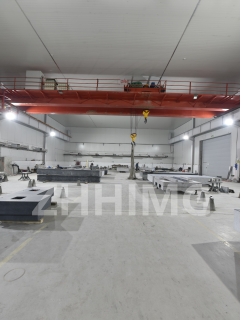Assembling, testing, and calibrating a granite with precision linear axis is a delicate process that requires attention to detail and precision. In this article, we will discuss the step-by-step process for assembling, testing, and calibrating a granite with precision linear axis.
Assembly Process
1. Firstly, inspect the components that make up the granite with precision linear axis. Check for any damages, cracks, breakages or irregularities. Make sure that all the parts are in good condition.
2. Next, clean the granite surface using a soft cloth. This will help remove any dust or debris that may interfere with the assembly and operation process.
3. Place the granite base on a flat and stable surface. Use a spirit level to ensure that the base is level and parallel to the surface.
4. Attach the precision linear axis onto the granite base using the mounting screws and bolts provided in the manufacturer's manual. Tighten the screws and bolts with a torque wrench to the recommended torque settings.
Testing Process
1. Power up the precision linear axis and check if it can move freely along the linear bearings. If there are any obstructions, remove them carefully to avoid damaging the axis.
2. Check if all the linear bearings are aligned properly. Misaligned bearings will cause the precision linear axis to wobble and lead to inaccuracies in measurements.
3. Test the precision linear axis at different speeds to ensure that it performs smoothly. If there is any vibration or noise while moving, adjust the bearings or the mounting screws to eliminate them.
Calibration Process
1. Calibration of precision linear axis is necessary to ensure accurate measurements and smooth operation. It involves setting up reference points on the axis and testing its position accuracy.
2. Use a precision measuring instrument such as a micrometer or dial gauge to measure the actual distance between the reference points.
3. Compare the measured values with the expected values stored in the controller's memory. Adjust the calibration parameters if there are any deviations to ensure accurate readings.
4. Repeat the calibration process at different points along the linear axis for cross-checking and verification purposes.
Conclusion
Assembling, testing, and calibrating a granite with precision linear axis is a critical process that requires precision and accuracy. Follow the manufacturer's instructions carefully, and take your time to ensure that all the components are correctly installed and the precision linear axis is operating as expected. With proper assembly, testing, and calibration, you can achieve accurate measurements and smooth operation of your granite with precision linear axis.
Post time: Feb-22-2024

